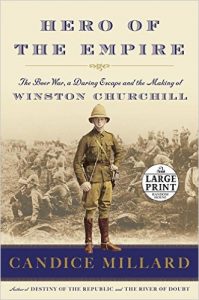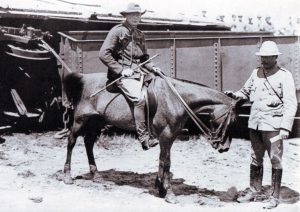Finest Hour 180
Churchill on Foot—13 & 14 December 1899
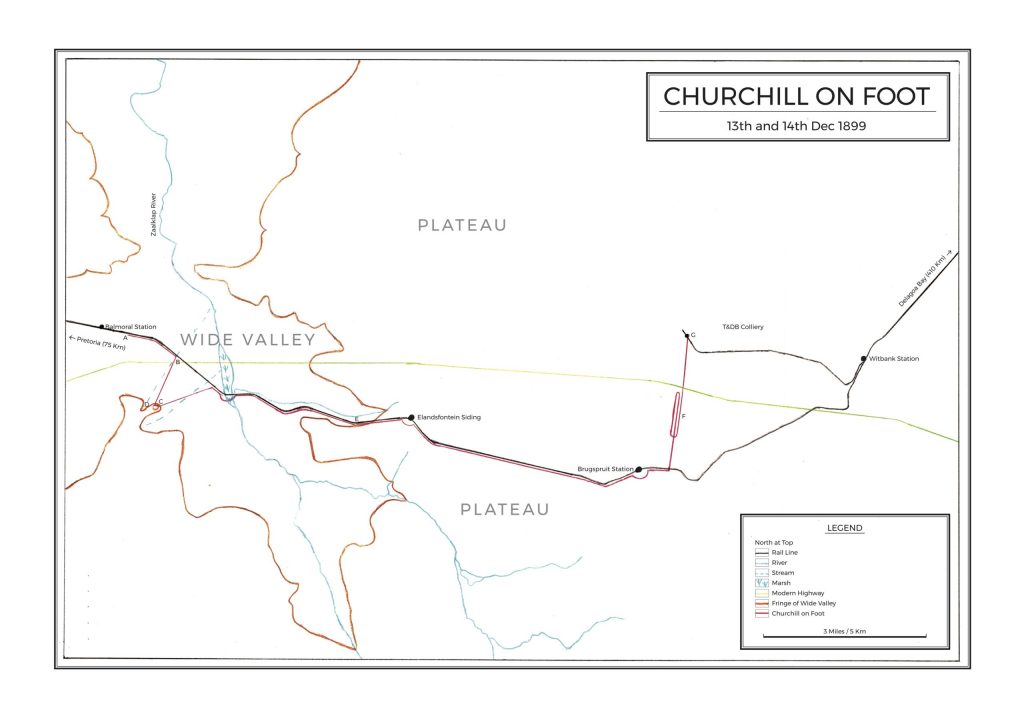
John Bird's reconstruction of Churchill's route at Witbank
September 15, 2018
Finest Hour 180, Spring 2018
Page 16
By John Bird
John Bird lives in Witbank, South Africa
On 12 December 1899, Winston Churchill escaped from the State Model School in Pretoria, where he had been held prisoner by the Boers since his capture the previous month. After brazenly walking out of town, he found a railway line, which he hoped led on to his goal: the Portuguese colony at Delagoa Bay. In the evening, he scrambled onto a freight train and caught some sleep. But he knew he could not continue on the train after dawn, since he might be spotted on board and he would need to find water.
In the early hours of the 13th, Churchill jumped from the train and began to make his way on foot until he miraculously happened upon help at the Transvaal & Delagoa Bay Colliery near Witbank. While he subsequently recorded what he could of this journey, the precise route he then took has hitherto remained a complete mystery. It took many years of research, but I have now been able to put together a plausible itinerary. To do this, I found two keys were necessary to trace Churchill’s journey from the time he sprawled off the train at a quarter to four on the morning of 13 December until he was taken down a mineshaft at the colliery at a quarter to five the following morning.
Two Keys
The first key was not easy to find. There were more than thirty shafts in use at the colliery over the years. It took several missions by a friend of mine flying in his micro-light to photograph the area. In this way, we first identified the fishpond at the manager’s house. From there, we homed in on what we believed to be the shaft used by Churchill. In 2009, I spoke with a few of the old area residents who remembered the shaft as children and confirmed its position. I later found photos of the shaft from the 1920s through the 1960s. Most importantly, I discovered surveyor’s plans dated 1899 and 1925 of underground workings on this same shaft. It was Churchill’s all right.
The second key was even more elusive. Churchill recorded several descriptive points about the hill where he spent the daylight hours of 13 December. If this hill were found, I felt certain that the story of his journey on foot could be determined. So I walked every meter of the rail line from Crown-Douglas siding to Witbank station. Except for the improvements over the years, the line remains almost exactly as it was in 1899. Research like this is never easy, and my walk ended with four low “hills of interest,” all set in the fringe of the valley. On visiting each, three were immediately dismissed, but the fourth arrested my attention. Everything Churchill mentioned was there: the deep ravine with a grove of indigenous trees growing on the side, the little tin-roofed town of Balmoral three miles to the westward, and the incline where trains battle to climb out of the valley. I also found a little pool of clear water that tantalized in the heat of the day and the boulders Churchill said he navigated on his way down the hill in the evening to return to the rail line.
The hill, set upon the fringe of a mundane valley, is not a significant geographic feature, and it is no surprise that it had never been identified before in connection with Churchill. Yet all the pieces fit. Two seasonal streams run down its sides. The stream to the east feeds into the bog and marsh mentioned in Churchill’s account. The western stream flows down a deep ravine into a small gully before passing under the rail line. This had to be where Churchill drank deeply—enough, he wrote, for the whole day. Some 800 meters backward from this stream, there is a curve in the line, a likely point for Churchill to have sprawled off the train.
Churchill had reported: “No one in the world knew where I was—I did not know myself.” To prove my theory, then, it was necessary to fit the times of the journey supplied by Churchill to the route I tentatively identified. I found they did indeed fit—and right to the minute.
Here, then, follows my reconstruction of Churchill’s journey while on foot, including estimated times and distances. Some points he mentions are out of sequence, but he certainly was not keeping a precise record while fleeing his enemy. Imperial measures are used as well as metric units along the rail line, just as in 1899. Times are given in current South Africa Standard Time, but in 1899, the Transvaal was thirty minutes ahead of this.
To the Fires
One and a half kilometers east of Balmoral, the rail line curves sharply to the right. Trains must slow to take this bend, and I imagine near this spot Churchill sprawled uninjured from the moving train at a quarter to four in the morning. He picked himself up and watched his faithful ally of the night hurry on its way. After walking eastward for some time, he came upon water in a small gully. Drinking his fill, Churchill noted thankfully that the track headed towards the dawning sky, confirming that he was on the right track towards Delagoa Bay. About 2000 yards to the south, Churchill could see bushes growing on the side of a hill and deep ravine. Twenty minutes of walking through the veld brought him to the trees. Around 4:30 Churchill entered the grove alongside the deep ravine. Probably he went exploring and walked 200 yards or so to the eastern extremity of the trees. From here he had a view of the rail line to the east, saw the trains laboring up the incline, and recorded the passing time of each.
At 3:36 pm that afternoon, Churchill may have seen a nearly full moon rise in the east, giving assurance of some light for the coming night. But for the moment, he sought shelter from the sun and oppressive heat in the shade of the trees. This action drew the attention of a flight of cape vultures. These spiraled at a great height above his hiding place, and their associated dance of death entertained Churchill for some of the early afternoon.
By 5:00 pm, the heat had lifted, and life in the wide valley began to stir. Churchill had had the whole day to contemplate life and asked for strength to overcome what lay ahead. This was soon to be “swiftly and wonderfully answered.” At 7:30, with darkness upon him, he broke cover and headed back to the rail line. First he negotiated his way through a boulder field in his path and soon reached open veld before coming to a little stream.
At 7:30 the dinner bell sounded for the prisoners back in Pretoria, but for Churchill it was a drink of cool water. Hunger was now becoming his greatest enemy. By the time he reached the rail line, the sun had gone down. The moon, now high in the sky, allowed him to set a cracking pace, and shortly he approached a guarded bridge. The picket was probably on the far side just off the line.
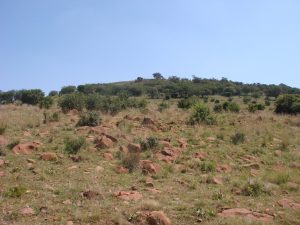
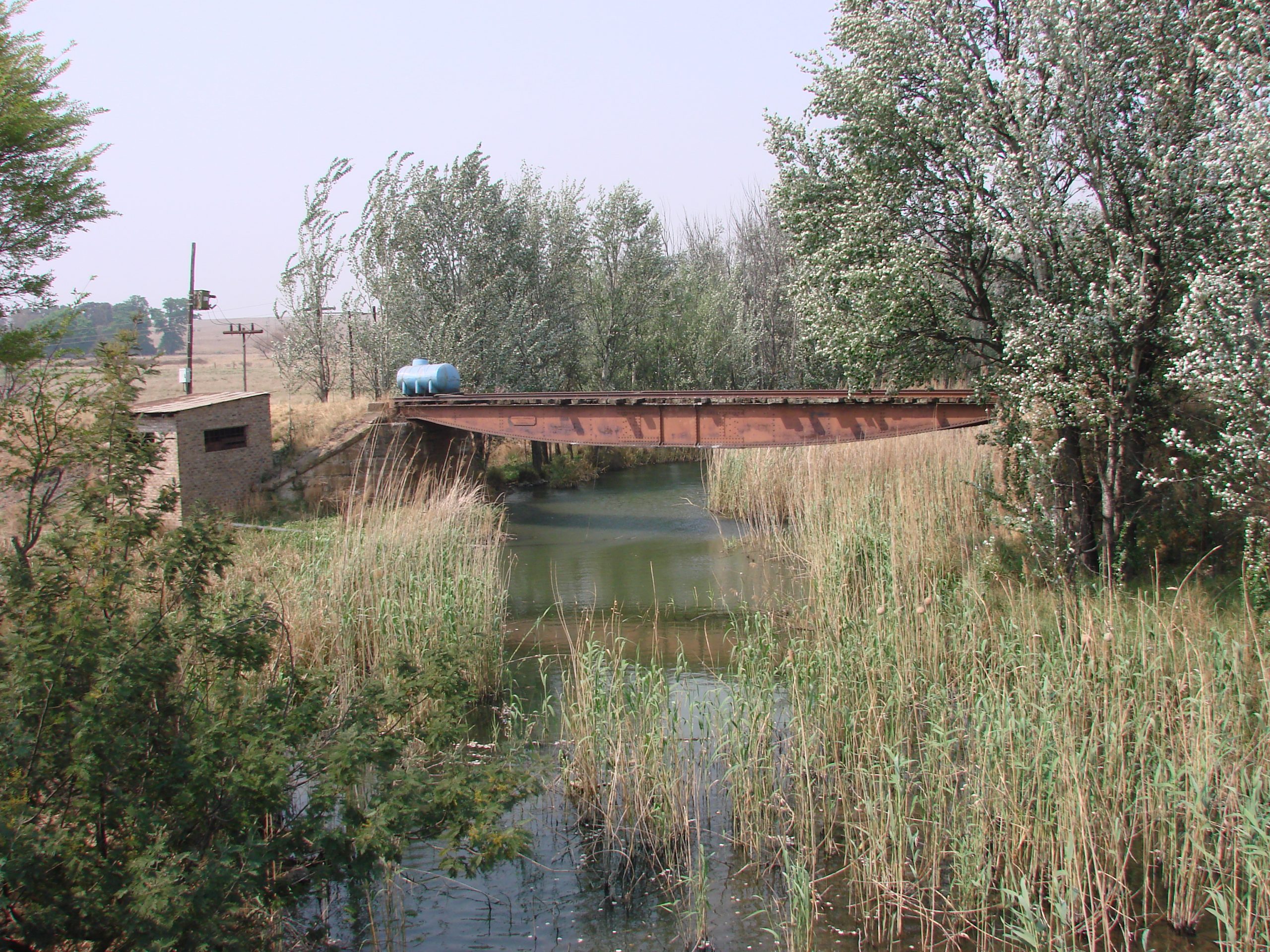
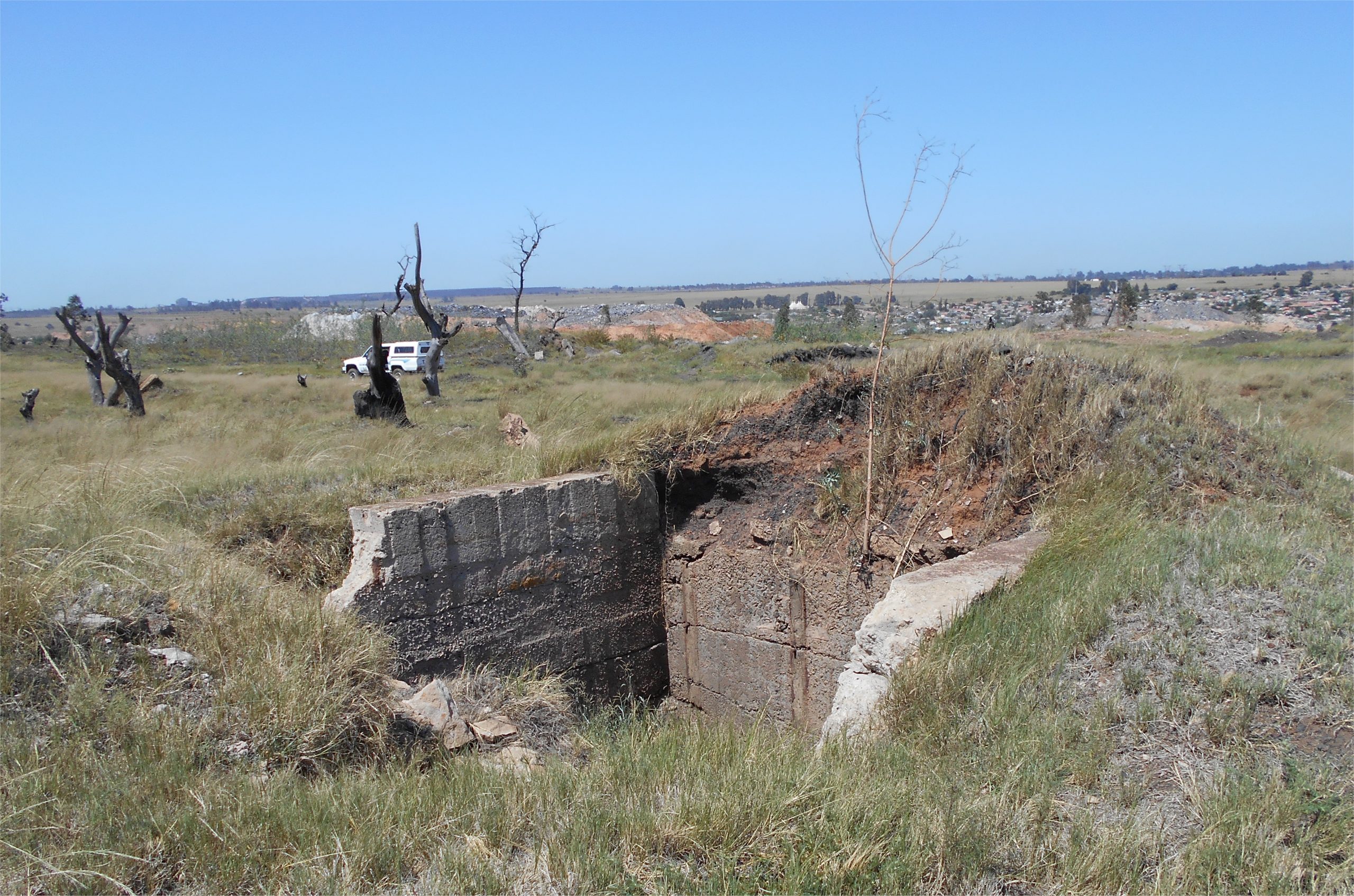
To avoid the picket, Churchill left the line to the right and was soon floundering around up to his knees in a marsh. He persisted for thirty minutes or so before wading through the strong-flowing, waist-deep Zaalklap River. Once across, he climbed up the far bank leaving the marsh behind. Scrambling through a few hundred yards of long grass brought him back to the rail line.
A short distance beyond the bridge, the line curved to the right. This was the first of four bends that allowed the rail line to zigzag up out of the wide valley. Earlier in the day while observing from the top of the hill, Churchill probably decided to head to the furthest and highest of the four bends where the trains move at their slowest. He arrived there at 9:15. From the curve, Churchill intended to jump onto a train as he had the night before. With the guard and driver facing away from the curve, he hoped to do this unobserved.
Here, for what seemed an eternity, Churchill waited, still wet from fording the river. Inactivity brought its own problem. The oppressive heat of the day was replaced by the chill of night on the high veld. A little after midnight on the 14th, it became obvious that no trains were running, and he set off to cover what ground he could while it was still dark. A few hundred meters of brisk walking brought him onto the surrounding plateau. Once again he was forced to leave the line to bypass a picket at Elandsfontein (now Wakefield) siding, and his clothing received a further drenching from dew on the long grass.
Beyond Elandsfontein, the rail-line is straight and level. Churchill would have walked along the center of the track by stepping on the flat wooden sleepers. He had good light from the bright moon and could have reached walking speeds in excess of five kilometers (three miles) per hour. A further good hour brought him to Brugspruit (now Clewer) station—a hive of activity—where Churchill dropped the idea of boarding a train. He skirted the station and continued on his way.
At this point, Churchill mentions passing a house where lamps lit up the windows, and he thought of all the food and warmth within. He realized, however, that this place meant only danger to him. Shortly after leaving Brugspruit behind, Churchill noticed the eight newly installed electric lights at Witbank station. Fifteen minutes later after passing a slight rise, Churchill noticed far out to his left two or three fires of what he thought to be a kraal. The time was now 2:00 am.
Tired and hungry, Churchill struck out through the veld hoping the fires would lead to cooperative Black or English people. After covering a mile, he had a moment filled with doubt and anxiety and turned back towards the line. Returning half a mile, he sat down completely baffled and pondered the situation. After composing himself, he argued that the fires offered a far better prospect than wondering aimlessly along the line. He turned to approach the fires once again. This was one of the most momentous decisions Churchill made in his early life. He could not have known it, but his chances of passing Witbank unnoticed would have been slim. The staff of the mine included a number of pro-Boer French volunteers. A rail depot and telegraph office employed some burghers and Boers in addition to the picket contingent. Given the size of the town and Churchill’s deteriorating strength, he would have had to seek succor from locals, who almost certainly would have turned him in to the Boers.
The bright moon, now just above the western horizon, allowed Churchill to cover ground at a fair pace. At 2:41 the moon slipped from the sky, and within minutes the veld was plunged into darkness. Hunger pangs and fatigue were all too constant reminders of the fact that Churchill had last eaten a meal at 1:00 pm on the 12th. In the chill and darkness of the night, he must have felt a terrible gnawing in his stomach. It was now only the fires before him that presented any glimmer of hope. Churchill does not mention the moon setting, but at that stage he was probably not more than a few hundred yards from the mine.
Thank God You Have Come Here!
The fires turned out to be much further off than Churchill first thought, but by 3:00 he noticed the winding wheel of a coal-mine. By this point, he had walked seventeen kilometers (more than nine miles) in three-and-a-quarter hours from the curve in the rail line—no easy task considering the conditions. As he walked closer to the winding engine, Churchill entered the light of the furnace fires. In the glow, he could make out a house of two stories surrounded by a number of lesser structures.
After Churchill wrapped twice upon the door, a man’s voice called out, “Wie’s daar?” The blood in Churchill’s veins froze. This was one of the few occasions that he was at a loss for words, but shortly he managed to get into conversation with John Howard, manager of the colliery. Howard spoke the immortal words. “Thank God you have come here! It is the only house for twenty miles where you would not have been handed over. But we are all British here, and we will see you through.” With this welcome ringing in his ear, Churchill was left in the room with a leg of mutton and a whiskey and soda while Howard left the house. Almost an hour later, the manager returned and reported that Churchill was to be hidden down the mine. Churchill followed his host out of the house across a small yard and into the enclosure, where he entered a cage to descend the shaft. Churchill noticed that the stars to the east had started to dim. It was now 4:30.
From the bottom of the shaft, Churchill was led 600 yards through a maze of cavernous passages to a short tunnel that had been dug into a sandstone dyke. This was a newly constructed stable and for the next thirty-four hours it was Churchill’s home. Not far from the stable was the second of three shafts on the mine in 1899. This ladder shaft is still visible, and it was probably through this that Churchill looked up and saw the light of day. After his time underground, he spent the following four days in an inner room at the back of the mine office. He left Witbank Station at 11:00 am on 19 December, hidden amongst bails of wool in a rail truck, just short of one week after sprawling from the train to begin his journey on foot. Upon his safe arrival at Delagoa Bay, Winston Churchill became—in the words of Candice Millard in her 2016 book about the adventure—a hero of the Empire.
Ambiguities
There is still some disagreement as to just where Howard and Churchill met. Almost certainly, it was at the boarding house of the mine. Howard’s wife and two teenaged children had moved to the coast for the duration of the war, and he found it easier staying in lodgings. There is considerable evidence to support this. One worth mentioning is that Howard told Churchill that the two catering ladies were staying in the boarding house with him, and it was their leg of mutton that had been consumed. Churchill said the structure had two stories and affirmed this many times. Some historians question this, but there is evidence suggesting that Churchill was right.
Several weeks after he escaped from prison, Churchill’s comrades Aylmer Haldane and Frederick le Mesurier escaped using an almost identical route. In Haldane’s book How We Escaped from Pretoria, there are a set of photographs taken from the time when he and Churchill first set out in the armoured train in Estcourt before the attack that led to their capture until Haldane and le Mesurier also arrived safely in Delagoa Bay. Two of these photos show the Transvaal and Delagoa Bay mine around March 1900. These helped in determining the time Churchill spent at the location. As incredible as it sounds, it seems that Haldane must have had a camera that he managed to hide from the Boer authorities. In any event, all of the pictures in his book must have been taken before November 1901.
Subscribe
WANT MORE?
Get the Churchill Bulletin delivered to your inbox once a month.


